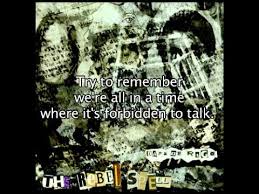In his article, “First Contact As a Spiritual Performance: Encounters on the North American West Coast,” John Sutton Lutz elaborates on the difficulties of “the first and ongoing contacts between native and stranger” (45). Undoubtedly, the interactions must have been perplexing to both sides, given the language barrier, and the lack of knowledge of the other culture. Lutz, however, through his writings, seems to make the assumption that the reader is either European or that the Europeans had a harder time understanding indigenous culture. Whether this assumption is fair or not, I will argue, that it is of minimal significance considering what he is trying to assert. The value of the article, I believe, is in his suggestion to accept the spiritual influences of all cultures, and to not disregard them as irrational, non-scientific beliefs. With this, we can perceive cultural differences of both history and present times in a less judgmental manner.
The assumption that the reader is of European descent – if that is what he assumed – is in fact, a fair one. Even if the reader was of native descent, the world of academia is dominated by Western cultural influence, and the reader would most likely have been immersed in a Euro-centric way of thought. For example, as a philosophy student, all of the courses I have experienced so far only covered Western philosophy, and none of Eastern. In fact, I believe there is only one course covering Eastern philosophy – the focus of the philosophy degree is dominated by Western thought.
And if, Lutz had made the assumption that Europeans would have a harder time interpreting the performances of the indigenous, I believe it would be a fair assumption as well. He speaks of the Europeans feeling a sense of superiority already because of their advanced technology, and it is widely presumed that the indigenous way of life is more primitive, perhaps due to nomadic ways of living off the land. The sense of superiority, I believe, makes it harder to empathize and/or accept the different ways one thinks. It is clear even in present day, with clashes of religion and even political views – for an individual or group that thinks they are right in opposition to their differing counterpart, it takes quite the open mind for them to begin to interpret their opposition’s beliefs with respect.
These assumptions, to me are not anything to be deeply concerned about. John Sutton Lutz’s article is so valuable, in my perception, because, whether or not he assumes that European thought is the dominant one, he encourages the reader to really question that dominance. Although, presumably more rational because of the Enlightenment’s focus on science and education, Lutz suggests that “a closer look at the Europeans would show that their rational behaviour was also determined, in part, by their non-rational spiritual beliefs” (31). For instance, it was in the belief of a religious view that Europeans thought the indigenous needed to be converted and saved spiritually – despite the disrespect and violence that was involved in the process.
Lutz illustrates that both sides were governed by their religious or spiritual beliefs that defined their world. One is not necessarily more rational or superior than the other, merely because of technological advantage. Technology, I believe, is not a reflection of a flourishing society when the scruples of a people are compromised. It is important to question is morality is a function of rationality – such as utilitarianism, a belief that the right thing to do is defined by the advantage to the group, the greater good. A moral compass, the ability to empathize and feel compassion, and an ability to let go of egoistic individuality, are more rational factors for a society to flourish than advanced technology.


